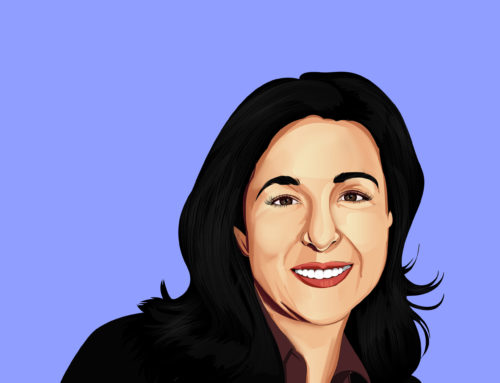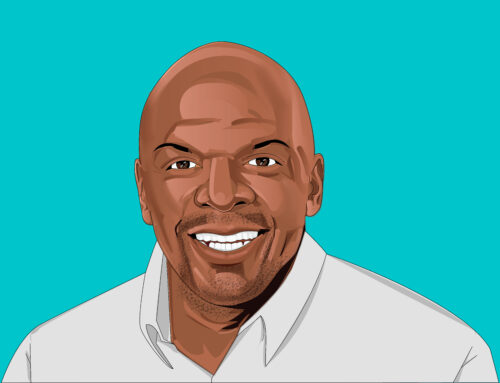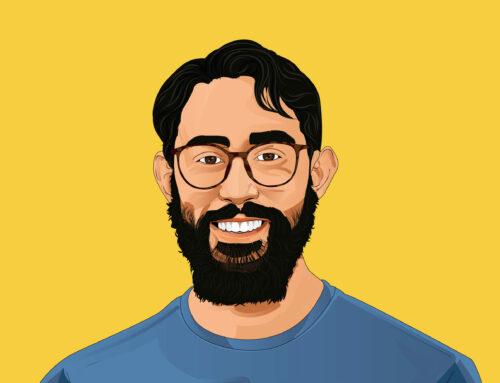Samantha Paglieri Talks International Experiences & Leveraging Social Media

In this episode of Talent Chronicles, Samantha Paglieri joins us to talk about how her love for the Italian culture led to her dream job of working for Eataly. Samantha is a well-versed expert in the industry, having worked in a multitude of spaces including finance, education, and restaurant spaces. Samantha talks about how her international experiences affect her view on Talent Acquisition and ways to leverage social media.
JCSI: Hi everyone. This is Bergin Sullivan with JCSI. I’m here today with Samantha Paglieri, joining us for an interview in our Talent Chronicles series. Thanks so much for being here with us today.
Samantha Paglieri: Thank you for having me.
JCSI: You started with Eataly almost five years ago, where you currently work as the Head of Talent Acquisition for North America. Could you give us a quick background of your work experiences and tell us a little bit about how you got into Talent Acquisition?
Samantha Paglieri: Sure. I think you’ve probably heard this a lot, but I was not exactly planning to go into Talent Acquisition or understanding that that could be a potential career path. But now that I’ve been in the industry for a little while, I think looking back, my experience and exposure to it started in high school. To explain and to tell a story, my high school didn’t have a recycling program, which was surprising and shocking to me. A classmate and I, we founded a student organization and we got everybody in the know about this and, got people to sign up for it and gave them jobs, and we implemented the recycling program, and we did a lot of other great things.
Even though I didn’t really know it at the time, or even after, I think that what I was doing in the years that I was working on this in high school was kind of what I’m doing right now. I was promoting an opportunity, getting people interested, and then assigning people to different roles based on their interest, their skill sets, and their availability.
This was something that in college I also did. I founded a health and wellness group. It was the same thing; built it from the ground up, got student interest, built out an organization and structure where everyone had a specific job, and we did a lot of things. Still then though, I wasn’t really connecting the dots that this was kind of in a way Talent Acquisition and something I could do for a career.
When I graduated school, I really had no idea what I wanted to or could do because I had a Liberal Arts degree. I got a job in New York, sort of one of the first jobs I came across, which was at a startup hedge fund. There I was doing executive admin work; I was doing operations work. And then, they gave me the task of coordinating and structuring the interview and hiring process for their Investment Analysts. It was kind of in that moment that I started learning a lot about the legalities of recruiting, the importance of having a process, salary negotiations, and all the nuts and bolts around Talent Acquisition.
And that’s when I was like, okay maybe this could be the right thing for me. However, not in finance. Hedge funds were not right for me. I didn’t really know what was going on with the hedge fund, to be honest. I was teaching Italian classes at night and the company I really wanted to work for was Eataly. I hadn’t known what I could do for them or what I could really offer to them. It was serendipitous that I’ve been working on this recruiting for the hedge fund, and I saw a post go up for a University Relations Recruitment position at Eataly. I applied and I got the job and now, I’ve been there for almost five years. Since I’ve started, Eataly has opened four more store locations and every time we open, it’s a big opening. We hire between 300 and 500 people per opening, so our employee population has more than doubled since I started.
As you can imagine, this means that our Talent Acquisition function over the past five years has also grown and matured a little bit. I transitioned from a university relations focused role into the Head of Talent Acquisition position, where I was overseeing the onsite recruiters who were in our different marketplaces and different cities and managing the onsite recruitment. Also, our corporate team who handled recruitment for senior positions for new store openings and our corporate office. I am transitioning right now into a bit more of a focus on culture and brand related to talent because with COVID and everything that’s happened over the past year, we realized that this is kind of an area that we should build out a lot more robustly. I would say I’ve touched on pretty much every aspect of the talent space within our company.
JCSI: That’s awesome, very impressive. What difference has it made working in Talent Acquisition and sort of loving what you do, for example, your Italian experiences? I know you had mentioned teaching Italian and then leading up to heading up the Talent Acquisition for Eataly, which was your dream of where you wanted to work.
Samantha Paglieri: Yeah. I had the privilege really, and the good fortune to live in Italy for two years. I studied at the University of Bologna there. During my time there, I really fell in love with the Italian culture, Italian food, and everything around that. During that time, I got to know Eataly as a company when I was there because we were founded in Italy. A lot of people don’t know that, but we were founded in the Piedmont region of Italy and there’s a bunch of Eataly’s all over the country of Italy. I explored Eataly’s when I was there. My love of the company went hand in hand for my love of just everything I was experiencing related to culture in Italy and cuisine.
That’s why I knew I wanted to work for the company. Then when it turned out that I was building a career in Talent Acquisition at the company, I realized how much my love of what we do and who we are is so important in this field. Every single day, motivated and excited to be sharing about what we do with other people and finding ways to bring them into it.
I’ve seen a lot of people who knew nothing about Italian cuisine at all come in and really get into it and love it. That makes me happy. It’s related to what I was doing and why I was teaching Italian because I love sharing it with other people. It enriched my life so much and I know it can do the same to other people’s. I think it’s important from an effectiveness standpoint and then a creativity standpoint too, to have this connection with the company you work for, to really be behind it and excited about it. When I was working on the recruitment process and recruiting analysts at the fund, I liked it, but I couldn’t really speak intelligently or passionately about what I was recruiting for. It just makes a world of difference to genuinely be invested in and excited about the company you work for, especially when you’re in Talent Acquisition. Your job is to sell it in a lot of ways to other people.
JCSI: Right. How has that international experience affected your view on Talent Acquisition? Not specifically to Eataly, but maybe just in general?
Samantha Paglieri: Yeah, I think a lot of things happened when I was living abroad. I learned a lot about a different culture and different systems and ways of doing things in terms of their academic institutions and how people get inserted into the workforce there.
I learned a lot about myself both as a professional and as a person. I started thinking about things differently. I think the two big takeaways from my experience abroad and then also Eataly is an international company. We are technically an Italian company here in North America. We’re 51% Italian owned, 45% US-based Eataly, North America. I think that the big things are when you’re building a Talent Acquisition process, one thing that I tried to do was take that understanding, which is a very small job of understanding that I got from experiencing one other culture, but that understanding that people are going through different education systems, if they can go through an education system. They’re growing up with different cultural values and they have different types of guidance and training. To try and build a process that can accommodate all these different experiences that people are coming to an interview with or applying to a job with, to not just have a standard question set that is very traditional terms of how we do or how we’re told to conduct interviews in the states. But to try and do something that allows for other people who might not have gotten the same guidance about interviews that we did going through school and job training and all that in the U.S to still shine. We try and ask different styles of questions; we ask a lot of probing questions.
With certain cultures, including the Italian one, trying to sell yourself is showing off. You don’t do that during an interview so sometimes we have to be trained to ask more probing questions to get people to appropriately answer some of the questions we have and then to try and build opportunities for people to not only have a traditional interview, but to get to do some work on the job. So, skills assessments and trails where they can show us not just if that they can do the interview, but if they can do the job. We tried to build that into our Talent Acquisition process.
I think the second big takeaway is if you’re working for an international company or a company with leadership that comes from different countries or have different backgrounds, I think it’s very important to have internal definitions of things. To give an example, internship. In Italy, an internship is something very different than it is in the U.S. Typically in Italy, after you’ve graduated from a university, you go and find an unpaid internship, and then maybe that unpaid internship will turn into a paid internship. Then maybe after that, you can get some type of contract work. Your internships, at least the way I understood them were things that students typically do while they’re studying over the summer, as a part-time thing while they’re still in school, they should be paid from my perspective.
One of my first projects when I joined Eataly was to define with everybody what the right definition of internship at Eataly was in North America, in a place where everybody who was coming from an American upbringing was probably thinking about it more similarly than I was, but maybe our Italian leadership was thinking of it the way they knew it.
I think it’s just important to understand that people, because of their backgrounds and the culture that they come from, certain words might mean certain things, and those are different to other people. So, it’s important to align on those things internally when you’re building programs and when you’re building processes.
JCSI: Yeah, definitely. That makes a lot of sense, and I could see how that could be a big cultural difference between Italy and North America. How would you say that you use social media to reach passive candidates in today’s job market or other forms of communication that you found to be successful for passive candidates?
Samantha Paglieri: Yeah. Before the pandemic, we were doing a lot of in-person outreach to passive candidates. I personally was on the road a lot, but it was our company culture to be inviting people into Eataly for different types of tours and educational moments to be going to campuses and going out in the community and talking about us to people who might not be actively looking for a job, but who could be in the future. We had to obviously change that quite a bit the past two years. We started concentrating much more on social media where right now we’re using the main platforms.
LinkedIn is our biggest one that we’re focusing on and then Instagram and then Facebook. We’ve tried over the past two years to be doing a bunch of organic content. We’ve invested a bit in some targeted digital advertising too, but a lot of it is just the in-house organic.
What we’re doing in terms of content is trying to find interesting, fun, bite-size ways to educate people about what we’re doing. In North America, I’ve learned there’s a lot of misconception or sort of misunderstanding about what the company is. A lot of people think we’re a New York founded company or we’re just restaurants or we’re just supermarket.
We’re trying to go back to the basics and explain like what Eataly is. Our goal is of course, to gain followers and then they can kind of come on the journey and slowly understand this with us. We’ve been having a lot of success with the organic. I was surprised at how well it’s taking off, but I think it stems from the fact that people don’t really know us. They think they do, but they don’t. And so, they see a posting like, oh, I didn’t realize there was one in Dallas, there’s one in Chicago. It gets them curious and then there’s following and slowly following along.
The other thing that we’re doing, a lot of companies are doing right now, is trying to tell the stories of our people. We’ve been leveraging Instagram stories a lot for that to have some video and photo content with people who’ve worked for us for a while, and explaining who they are, what they do, why they’ve been successful, and what they enjoy about the job. Our employees have had a lot of fun with this and then guests come in and recognize them and they’re all excited. It’s something we want to focus on more and maybe formalize a little bit more in the future. It’s been kind of a shift the past few years and we’ve already seen some good return on investment of time and resources so it’s an area we’re going to be continuing to develop.
JCSI: Yeah, definitely. For those stories, when you focus on specific employees, is it more corporate level or is it employees that would be in the location that customers would run into?
Samantha Paglieri: Yeah, every week for the past year, we have featured one employee from every store. The stores are running this.
JCSI: That’s awesome.
Samantha Paglieri: Yeah, it’s been great. It’s like a butcher or a line cook or a server, and that’s why the guests are coming in, recognizing them.
JCSI: When you manage both hourly and senior level positions, what would you say is the most important part of recruiting within the food and beverage industry?
Samantha Paglieri: I think one thing that I personally underestimated when I started and is the most important thing within our industry is the fact there’s no one size fits all type of process here. For every position or every group of positions, we have vastly different strategy as to how we source and attract for the first piece and then how we assess. To give an example, line cooks and back of the house talent, we have had to do a lot of creative things around referral or referral program and referral type events. Then, combine that with being super organized so we can assess them same day within the kitchen through a skills assessment or a trail. That type of process to bring in somebody back of the house, to contrast it for a marketing position; we’re doing a LinkedIn campaign, for example, and then having them do a writing skills assessment at maybe an on-store visit. It seems like every group of positions is like a very different type of recruitment that frankly requires different skill sets. One of them is event organization and this type of speed execution and incredible planning and calendarizing for that. The other one is more creativity and figuring out how to source people and connect with them on LinkedIn for passive candidates. I think our recruiters have a very difficult job of having to have this vast Swiss army knife of skillsets and approaches to what we do. The only thing that I would say is a connector, is that everybody we hire, we must assess their interest and ability to be an operator. From our Executive VPs to our line cooks or whoever, warehouse associates. Everyone we hire in the company, that is the thing we look for. Do they know what the food and beverage industry is? And are they willing to be on the floor and jump in when it’s crazy, if they need to, because that’s the reality. I guess this was like a multi-pronged answer to your question, but I think the things are like no one size fits all, you must be creative, and you probably need to be looking for operators in every position.
JCSI: Okay, that makes sense. I think we kind of learned that ourselves too over here, especially this past year, that one size fits all recruiting strategy isn’t cutting it anymore.
I know you kind of touched upon this, but within your hourly level of recruiting, how do you portray your company culture at that level? I know you had mentioned you used to do onsite events. Have you ventured into any zoom events like that or anything similar to that?
Samantha Paglieri: For the Dallas store opening, we opened Dallas in December 2020, which we didn’t know if we were going to open. It was tough because for openings, we typically do these mass onsite job fairs and open calls.
We did some virtual ones for that because we didn’t know what else we could do. I’m not going to say they were so successful because in our industry, especially for the hourly positions, I don’t think that that’s really the best way to recruit people when they’re going to have to work on site anyway. They’re not looking to do interviews like that or understanding how to do them. Sometimes some of our employees don’t even have computers. It depends on who we’re bringing in. We did try it. But we found that it was just more effective to have very scheduled and socially distanced interview times for everybody. The candidates were more comfortable, frankly, still coming on site than trying to do something virtually. To help them understand the company culture, what we do is on every interview we take some time to talk about the mission, the structure, the specifics of the role they’re playing for at Eataly.
And then we also in almost all cases, try and take them to their station or to wherever they would be working so they can either do a little bit of work depending on the role. If it’s one that we do a skills assessment for or stand and observe it for a little bit and try and feel a bit what the experience is like and what the culture is like.
It sounds simple, but those are kind of the two things we do. We talk about it, then we try and show it. Then once employees start, we do orientation, store tours, tastings, and a lot of different things to try and involve them in the culture. We found, at least right now, it seems like for hourly positions, people tend to still want to have the traditional interview process where they come on site. It’s not too long of a process and that’s it.
JCSI: Okay. That makes sense. Does it change for any of your executive level roles? How would you portray that culture at that level or foster those relationships with them?
Samantha Paglieri: Yeah, we certainly have a very different approach to recruiting for executives. However, I guess fundamentally it’s the same. First, we tell and have conversations and then we show; we bring them on site, we have lunch, we do a tour, sometimes they do some shadowing. We have a much more pipeline type of approach for the executive talent because with that type of talent, oftentimes you do have the luxury to be able to do that different than the hourly talent. It’s not just our Talent Acquisition team that is regularly conducting exploratory calls with candidates that we might not have a role for, but we like their background, or they’re interested in us, but we don’t know where they can fit; our Talent Acquisition team does that. But also, our CEO is regularly doing that. Our executive leadership team is very invested in this approach of getting to know people before they’re technically even candidates. That’s paid off in a lot of instances already. Then if somebody does formally enter a process for the open position, then we go into the series of tell and show interviews. We have a very thorough interview process; they meet people from corporate, they meet people from the global team because our global headquarters is in Milan. Then they meet store leaders and spend time in at least one store, usually more. We try our best to just get an authentic understanding of each other during the process. For the executive level, you could say it’s a little bit too long, but we usually never get that feedback from candidates. They’re usually very appreciative that they kind of had the opportunity to see so much before any types of decisions are made.
JCSI: Okay. Yeah, that’s definitely a great way to bring people in by involving that upper executive management. Those were all the questions I had to run through with you today. Were there any final thoughts? Anything we did not get to cover that you wanted to share?
Samantha Paglieri: No, I don’t think so. Thank you so much for having me.
JCSI: Yeah, of course. Thanks so much for joining us for another episode in our Talent Chronicles series!
Talent Chronicles is brought to you by JCSI, an innovative recruitment consultant that delivers better hires, faster, and at less cost.




